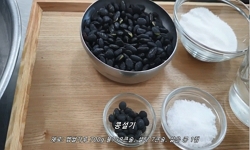By applying a Seemingly Unrelated Regression Model on Family Income and Expenditure Survey (FIES) data, the study examines the relationship of household rice and noodle consumption in the Philippines. Results show that noodles are already a substitute...
http://chineseinput.net/에서 pinyin(병음)방식으로 중국어를 변환할 수 있습니다.
변환된 중국어를 복사하여 사용하시면 됩니다.
- 中文 을 입력하시려면 zhongwen을 입력하시고 space를누르시면됩니다.
- 北京 을 입력하시려면 beijing을 입력하시고 space를 누르시면 됩니다.
https://www.riss.kr/link?id=A101497747
- 저자
- 발행기관
- 학술지명
- 권호사항
-
발행연도
2014
-
작성언어
-
- 주제어
-
KDC
323
-
자료형태
학술저널
-
수록면
27-34(8쪽)
- 제공처
-
0
상세조회 -
0
다운로드
부가정보
다국어 초록 (Multilingual Abstract)
By applying a Seemingly Unrelated Regression Model on Family Income and Expenditure Survey (FIES) data, the study examines the relationship of household rice and noodle consumption in the Philippines. Results show that noodles are already a substitute good for rice, but rice is not a substitute good for noodles. In addition, their respective demand exhibits negative relationship with their own prices and positive relationship with respect to household income which supports the idea that both rice and noodles are normal goods. A number of significant variables on the characteristics of household heads suggest the importance of household heads in determining consumption decisions. These include age, sex, marital status and educational attainment. Spouse employment is also found to negatively influence rice consumption. Lastly, the study also reveals that households in the urban area, particularly in Luzon, which is the biggest island in the Philippines, are most likely to have lower demand for rice as compared to their rural counterparts. Meanwhile, the opposite is true for noodle consumption.
목차 (Table of Contents)
- I. Introduction
- II. Conceptual Framework
- III. Methodology
- IV. Results and Discussion
- V. Conclusion
- I. Introduction
- II. Conceptual Framework
- III. Methodology
- IV. Results and Discussion
- V. Conclusion
- VI. Limitations of the Study
- References
동일학술지(권/호) 다른 논문
-
Testing the Inflation Convergence among the Original ASEAN Members
- 한국무역연구원
- Maria Luisa G. Valera a
- 2014
-
Perceptions of UP Los Baños Agribusiness Management Graduates on Their Job Preparedness
- 한국무역연구원
- Jewel Joanna S. Cabardo
- 2014
-
The Quantity-Quality Transition of Children: Evidence From The Philippines
- 한국무역연구원
- Jana Crissia DC. Estacio
- 2014
-
- 한국무역연구원
- Won-Gil Cho
- 2014





 스콜라
스콜라






